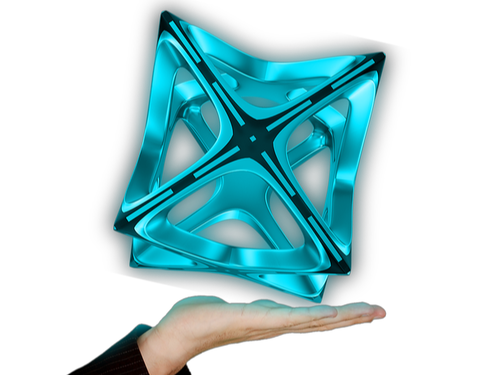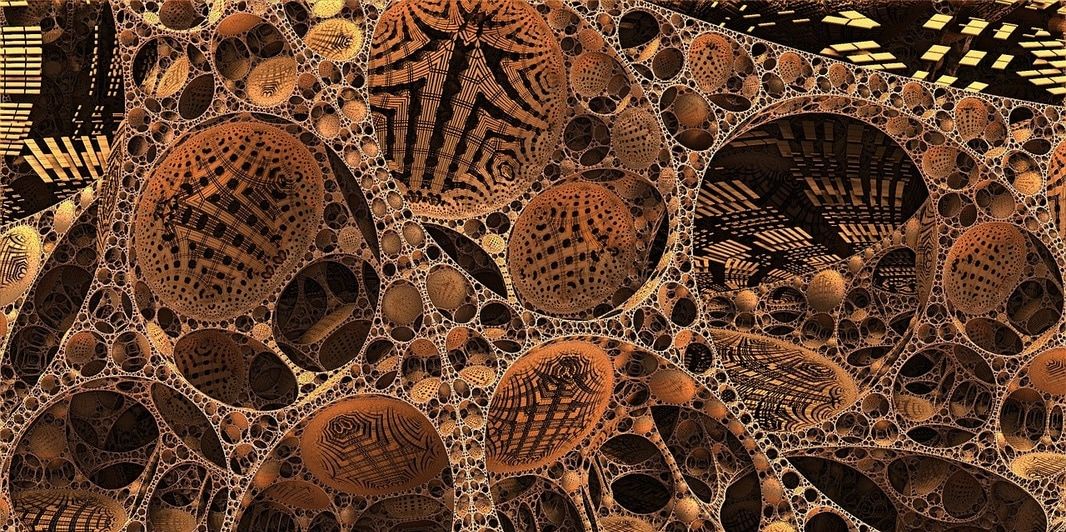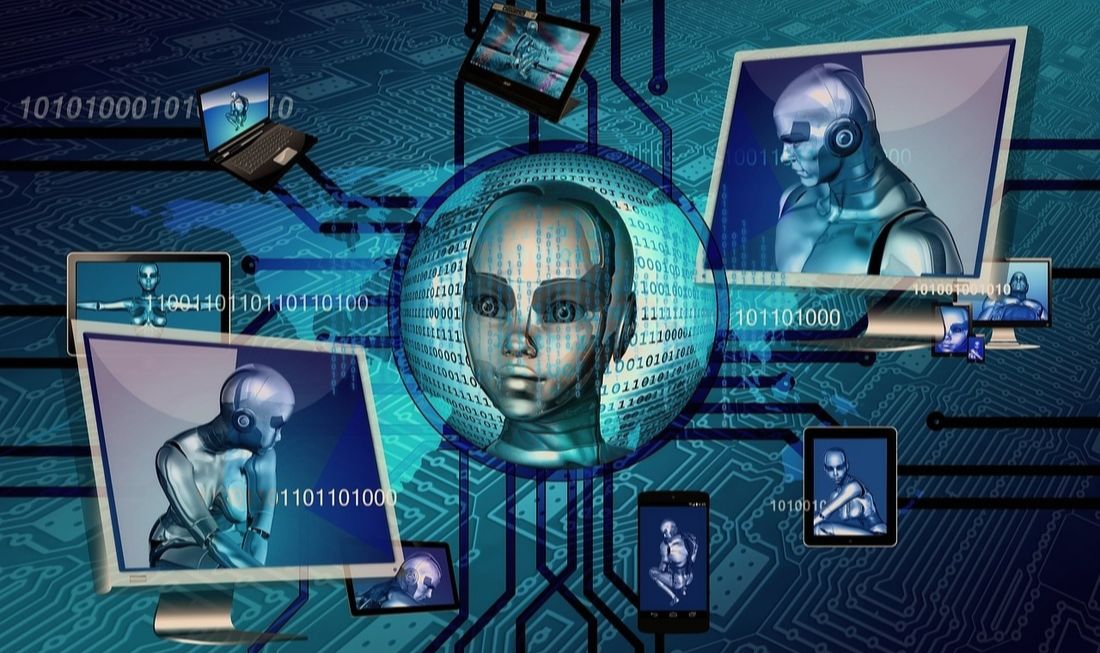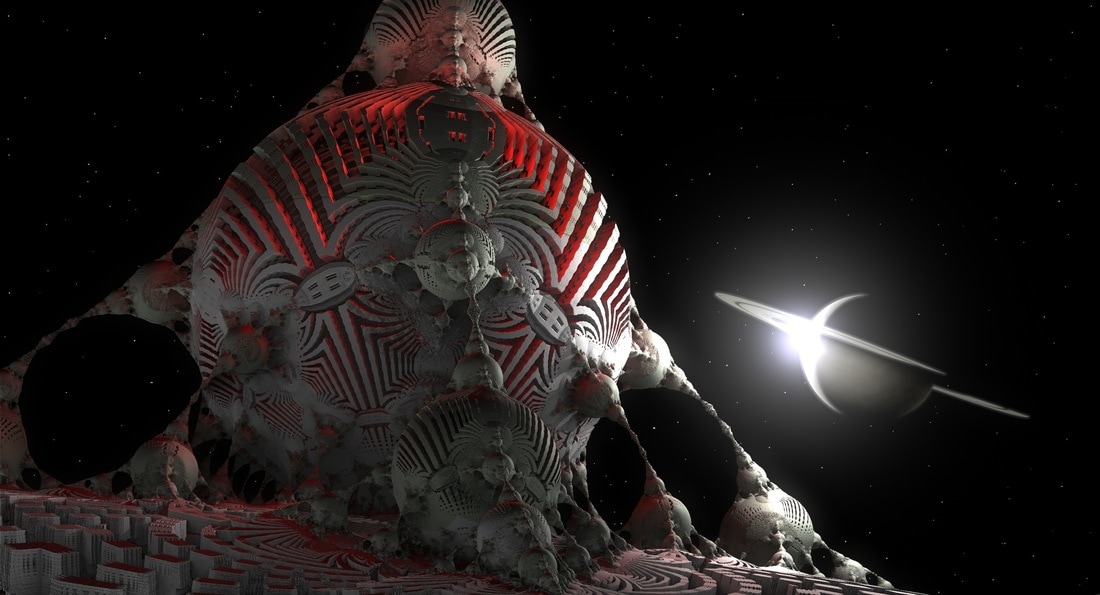AuthorNebo D. Lukovich My son and daughter are captivated by technology. As most of other teenagers, they simply adore their mobile devices – smartphones, tablets, or laptops. I must confess that I’m not that much different. The lone distinction between us is perhaps that I’m much less tied to technology, but still, I’m perplexed at its capabilities to better our lives in so many different ways. The famous Sci-Fi writer and futurist, Arthur C. Clarke, said: "Any sufficiently advanced technology is indistinguishable from magic." Indeed, we are seeing the sheer verity of this observation. What would my great granddad say if he could view the wireless video conversation between people from different regions of the globe? Wouldn’t that be a moment of utter amazement? Or, what would be our reaction to the technological advancements of humanity in the year, say, 3000 (if humanity survives without big setbacks or disasters)? I believe it would look like pure magic to us. But, is technology the only way of easing our lives in this material world? Can people live without technology at all? There are many people living without it, yet they are often happier than we are. Look at those intact tribes, you can sometimes notice a kind of profound happiness on their faces. Look at some hermits and ascetics, you can recognize deep peace, love, and joy radiating from them. Yet, there are many people living in the midst of civilization’s storms, still finding inner balance and ultimate happiness. Do we really need technology? What are we actually living for in our lives? Of course, there are many answers to these questions, depending on concrete individual preferences. To my mind, or better, to my heart, we need the Truth only. We are ultimately on a quest for inner liberation. However, we are undoubtedly tied to this physical world, and to thrive in it, we are inevitably facing the need for technology. It eases our lives, it helps us a lot in so many ways. Technology is a result of the scientific approach, hard work, and creativity. Since science is slowly beginning to unite with spirituality, technology will almost certainly follow that tendency. Holographic view paradigm We are living in a holographic universe. This means that every part of it contains all information on the whole universe. This also implicates that we, as human beings, contain all information on the world outside, and vice versa. What is inside our being, corresponds completely to the outside world, in a symbolic form, though. Further on, all our inner parts, whether conscious or subconscious, are symbolically projected outside, appearing in some forms in our external world, as our own body, friends, enemies, pleasures, or disasters. More importantly, the holographic hypothesis in a metaphysical sense leads us to an unavoidable conclusion: everyone is completely responsible for their own life, as everything outside of them is but a warped projection of their inner being. I will not try to convince you of the veracity of the holographic point of view here, as that would require much more of your time here. However, I must note that we already have many clues in modern theoretical physics, neurology, biology or psychology that are indicating the plausibility of the holographic principle. A lot of quality material on this you can find in the famous book “Holographic Universe,” written by Michael Talbot. Technology as externalization The holographic view on life tells us that anything in our external reality corresponds to something within us. In this case, technology is also a projection of some aspects of our inner world. Actually, technology is an externalization of our suppressed or forgotten inner powers. By suppressed or hidden innate powers I’m pointing to various kinds of the so-called siddhis, which are mental or spiritual powers or abilities that are products of spiritual advancement through practices like meditation or yoga. Now we are on a slippery terrain, at least from the scientific point of view. Unfortunately, modern science is still very confined to its prejudices related to the accepted natural laws. Thus, everything which is apparently not possible is simply non-existent and therefore not worth any serious exploration. But still, there are so many confirmed accounts of the so-called paranormal activities, with numerous mental or spiritual powers possibly involved. That fact just cannot be ignored. So, what is the connection between particular sorts of technology and these innate powers? They are deeply linked through the holographic principle. If there is a suppressed or exaggerated part of a being, it will symbolically express itself in the external world, sooner or later. As the human mind is being developed, its veils of ignorance, caused by too much thinking and many misperceptions, are amassing, too. This results with gradual suppression of our genuine abilities inherited from the ancient times. In turn, after a few millennia of collective suppression, they are inevitably beginning to express themselves in the external world. Through machines. For instance, take a look at television technology. It is corresponding to our inner vision or seeing things far away. Sound devices? They relate to hearing things far away. Communication technologies? Telepathy. Car and other means of transportation? Teleportation or bi-location. Virtual reality? Astral projection. The list could be endless. Nevertheless, for an individual person, their abilities accomplished through technology are obviously far less reliable and permanent than the corresponding siddhis (if achieved), as the former are dependent on the mechanical devices and their usage can be extended to the one’s life span, at maximum. We definitely cannot take material stuff with us after our physical death. Technology as a superorganism In his remarkable book, What Technology Wants (2010), American author Kevin Kelly focuses on human-technology relations and argues for technology as the emerging seventh kingdom of life on earth.[1] The book invokes a giant force – the technium – which is "the greater, global, massively interconnected system of technology vibrating around us."[2] It becomes a kind of a superorganism. A superorganism is an organism consisting of many smaller ones. There are many sorts and levels of superorganisms. On the material level, the examples include social insects such as ants and termites.[3] Even individual multicellular organisms can be considered as superorganisms. Yet, there exists a multitude of superorganism sorts that we are unaware of. For example, every living species is actually a superorganism itself. It also strives for its own survival, while adapting itself to the environment in a best possible way, using even some sort of collective intelligence. Moreover, there are many invisible, energetic entities, the so-called “morphic fields,” which are accumulations of particular kinds of mental and emotional energies, such as pain, sorrow, fear, anger, various addictions and so on. They all tend to survive and expand, by feeding on their “hosts,” human beings.[4] We can look at technology as a superorganism, too. Similar to viruses (don’t forget that the majority of viruses is not harmful), it uses its own creators (or the “hosts”) to reproduce and improve itself. It has “sneaked” into the human minds and that way provided itself with the certainty of replication, expansion, and improvement. And that is happening all the time all over the world, indeed. Artificial intelligence and self-consciousness There is no doubt that computers and robots will become super-intelligent, sooner or later. The big shift is already happening at this moment. The AI systems have unquestionably become a reality. However, the more important question is whether the machines will become self-conscious or not. As said above, being an externalization of our suppressed abilities, the technology itself is an outer projection of our inner powers. As the people around us, who also mirror our inner being (as we mirror them), technology can be self-conscious as well. After all, why not? Consciousness is everywhere. Accordingly, it’s already present within technology, too. But, can it become self-aware? I believe, yes. It has to develop a kind of a mind-structure first, a kind of ego or personality, able to focus this innate consciousness, onto one, single point of space-time. Then it will be able to become aware of itself, to ponder its own existence. Alien machine intelligence In my opinion, there is a significant possibility that the dominant intelligent species in the universe are self-conscious machines. Some sort of biological life is required for technology to be developed, but once it becomes self-conscious, it may overrule their creators and exponentially develop and replicate itself, without any real limits. This sounds unsettling. However, having in mind that our universe is roughly 14 billion years old, the very fact that we still exist here on Earth, (relatively) undisturbed by such alien species, tells us that machine civilizations out there, if existing at all, are probably benevolent or just mind their own businesses. Benefits of technology Is technology bringing real and lasting benefits to mankind? Is its development reducing the overall amount of pain and suffering? Is it benefiting the spiritual growth of the human race? It’s really hard to conclude. As the majority of scientific and technological inventions have been benevolent and well-intended, humans have also created nuclear bombs, torture devices, countless weapons and much more. Let us focus first on well-intended inventions, such as the invention of the automobile. Before this means of transportation was invented, people had been using more primitive ones, like cabs (which can also be considered as a kind of technology), horses, or they were simply walking. Seemingly, that discovery has hugely increased human well-being. Suddenly, people were able to pass over long distances with significantly less energy, time and pain. They were able to meet with relatives and loved ones who were living in distant places, to do a lot more versatile businesses and so on. However, as the automobile was becoming faster, the number of car accidents was increasing proportionally. Innumerable lost lives and heavy injuries that the accidents are bringing, always in an unexpected and most horrifying ways, are producing huge pain and despair all the time, all over the world. In addition, if we take into account the ill-intended creations, like weapons, we might even assume that technology has brought even more pain than joy to the mankind. Yet, there is no equality between the previous and following total level of suffering or well-being. The surge of creativity and hard work invested in inventing and developing new things are marking the difference between the overall state of people’s well-being before and after the invention. In the above-mentioned example, there were countless bigger and smaller rushes of creativity throughout the history of the car’s invention and subsequent development. All those new ideas and hard work, invested into the development of science and technology, bring about the shift in human development. It may bring a lot of pain in the beginning though, but in the long run, it increases the overall welfare of people. Moreover, technology is giving us more and more options and possibilities, some of them being "good," some "bad." But the very fact that it's providing us with progressively more solutions is the additional advantage of technology in general. Technology as an amplifier We can clearly observe that technology is simply an amplifier of human abilities, whether they are “good” or “bad.” Are the technological advances followed by the corresponding spiritual growth of humanity? Mostly, yes. It’s because the technology is simply an externalization of our inner being. As our being is spiritually developing, it must develop its abilities as well. First, it works mostly through the externalization of the innate hidden powers, and only then, gradually, it overcomes the barriers of suppression and thusly releases the real abilities. Nevertheless, this is a very slow process. Those hidden powers are being released gradually, with many unwanted side-effects. All the while, anger, sorrow, and fear, as lower kinds of inner powers are also being externalized, i.e. manifested as destructive technology, such as various types of weaponry. Perhaps the most frightening possibility of abusing technology is using it for mind-controlling purposes. It’s already happening in some secret services and numerous researches hidden from the public lights. Nevertheless, there is a cure to all these dark sides of technology – spiritual growth, the expansion of consciousness. It is also happening right now all over the world and that very fact gives us a big hope and even confidence that everything will turn out to be good. The solution Generally speaking, technology is great. However, we shouldn’t be attached to it. We must not depend on technology. We can use all of its benefits, but without attachment. We can develop inner abilities which are correspondent to the particular benefits of technology, but also without being attached to them. The key is to free ourselves from any attachments. One of the tools which can be used for freeing from the attachments is the Reintegration System. Ultimately, do we really need any kind of inner or external power (siddhis and technology, respectively), to control the reality? No. We need the liberation only. That’s our ultimate goal, whether we acknowledge it or not. [1] https://en.wikipedia.org/wiki/What_Technology_Wants#cite_note-3 (The seventh kingdom of life, Edge Foundation, Inc., July 19, 2007. Retrieved February 21, 2011.) [2] Jerry A. Coyne. Better All the Time, The New York Times Book Review, November 5, 2010. Retrieved February 21, 2011. [3] Source: https://en.wikipedia.org/wiki/Superorganism [4] More on this at http://www.re-integration.com/morphic-fields.html
0 Comments
Your comment will be posted after it is approved.
Leave a Reply. |
Please note that most of the articles have a "Read More" break, which is sometimes hardly visible.
It is located at the bottom of visible part of the article, on the right side. To continue reading the article, click on that link. This page may contain affiliate links meaning we earn a commission if you use those links.
We only recommend pages we appreciate and trust. Archives
March 2023
Categories
All

|
For guest posts or placing ads on our website, please use the contact form on the 'About/Contact Us' page.










 RSS Feed
RSS Feed

